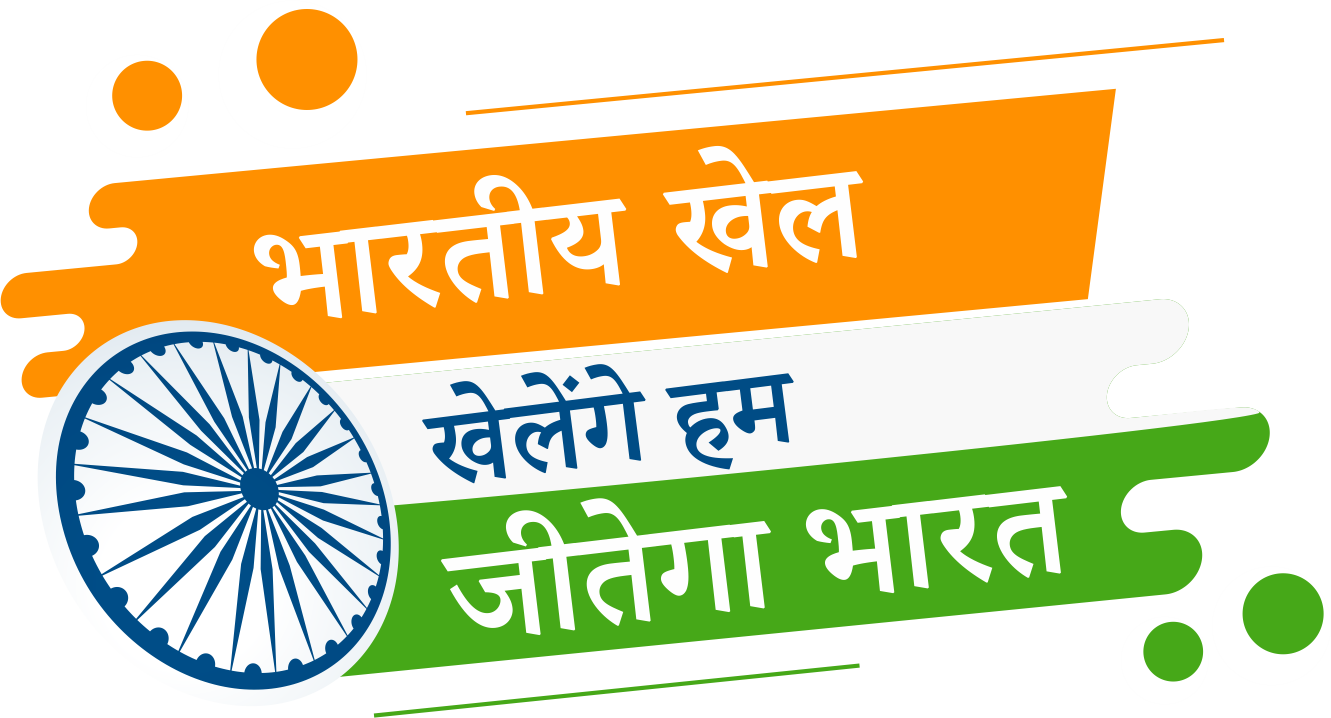Santhal katti
Introduction
Pioneered by the Santhal and Bhumij tribal communities, Kati is traditionally played as a summer pastime after the harvest season. It is played between two teams of nine players each. Each player has a kati, a half-moon-shaped disc usually made from the wood of the tamarind tree as it is lighter in weight, and a tarhi, a 6 to 7 ft. long bamboo rod. The game involves strenuous footwork, sharp observation and quick limber moves.
Players must hit the kati with a tarhi to strike the opponent’s kati. The striking team lines up on the boundary with their kati and tarhi. The defender’s kati are placed in a row on the midline of the rectangular field.
The game is named after Kati that two teams hit and play against each other. Earlier, teams used Katis of different sizes. But now Kati has emerged as a piece of a definite size, the angle of which between its equal sides is almost 150 degrees. Its base is 12 inches long, while the thickness of its base is 1.5 inches that gradually increases to 4 inches at the apex.
The Play
The goal of the offensive team is to cross all the trenches and return to the front trench to score points. If any of the offensive team players succeed in moving across all the sections and return safely, without being touched by any of the opposing team members minding the trenches, the offensive team earns the full score. The team on offense is called lonawale and the defenders are patiwale.
Two teams, Lonawale (in Grey) and Patiwale (in black)
Playing Method
The objective of the striking team player is to send their kati to the defender’s court but after striking the opponent’s kati that is placed midway. A striker propels the bamboo stick with his foot to hit his own kati to collide it with the opponent’s kati.
The weight of a Kati in the past used to vary between two kilograms to 2.5 kilograms. But now, it weighs four to five kilograms. It is playfield is rectangular area where a central line is drawn parallel to the short sides of the rectangle.
A wooden log, called bergha, is placed at the mid-point of the central line. Two parallel lines are drawn on the ground–each on the opposite side of the central one. The distance between each line and the central line varies between 2’ and 2’.5”.
Each player has a kati. All katis lie on the ground and players try to aim a bamboo stick with their feet to hit the opponent’s kati. Every successful hit gains points.
Players take turns to strike the opponent’s kati. If a player fails to hit the kati, the turn moves to the next player. The player stands at a designated distance from the center of the court. Using their striker kati, they aim to knock the opponent’s kati out of its position.
Scoring
Points are awarded when a player successfully hits the opponent’s kati. Depending on local variations, additional rules might define how points are calculated (e.g., how far the kati is knocked out or if it remains in a specific area). The game continues until 7 points achieved.
Key Strategy is deciding how to position and aim the striker kati.
Skills Required
Aiming: Precision in targeting the opponent’s kati.
Control: Accurate force applied while striking.
A player should have a keen eyesight to hit ‘Kati’ with his bamboo stick so that the disc can swerve away at one go. For this feat, he should enhance the strength of his leg that kicks the Kati. Similarly, his grip must hold the bamboo stick tightly and tactfully so his shot does not misfire. For this, regular practice is needed.
Cultural Significance
The game is not only entertaining but also a way to connect with local traditions, fostering community bonds.
All the opponent’s Katis are placed on the midline. Gripping the upper part of a bamboo stick, a player has to kick the lower part of the stick in such a way that it hits a Kati.
If the hit lobs the Kati over the line on the other side of the central line, it becomes the first step towards victory. The player tries to hit other Katis one after another to score the final victory. Now a new component is added to the game. Here the player who has successfully hit all Katis, will have to hit the Katis from the place where they fall in a way that they strike the bergha, to cap an ultimate victory.
Every successful strike earns a point. Each time they displace the kati with their stick, players earn a point.
Address
Bharatiya Khel
Indian Knowledge Systems (IKS) Division
Ministry of Education (MoE),
Government of India,
Our office is located in
All India Council for Technical Education (AICTE)
Nelson Mandela Marg,
Vasant Kunj,
New Delhi-110070

